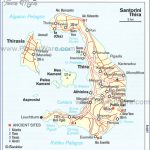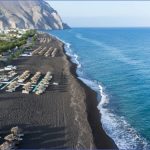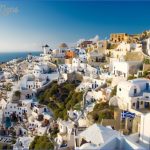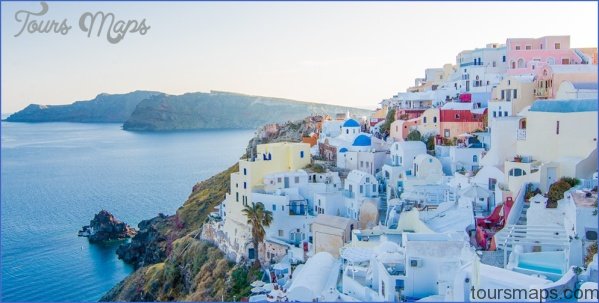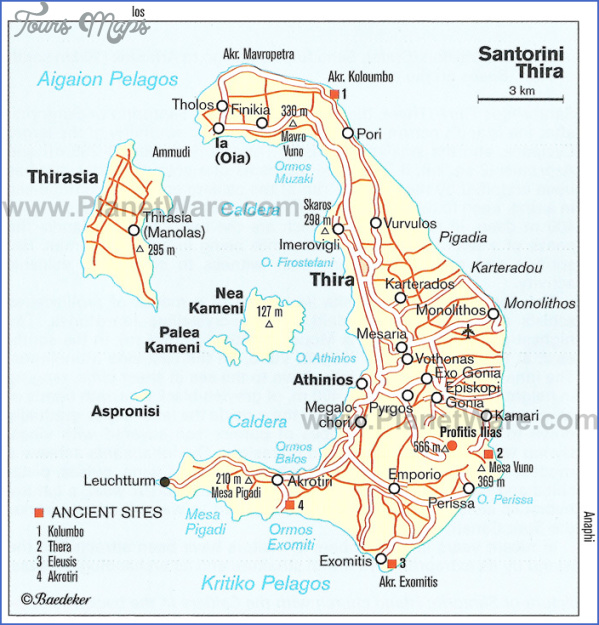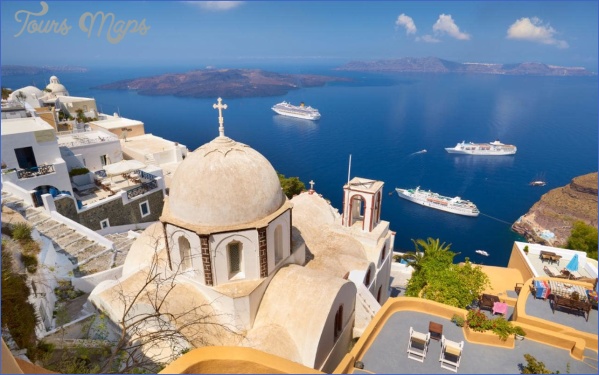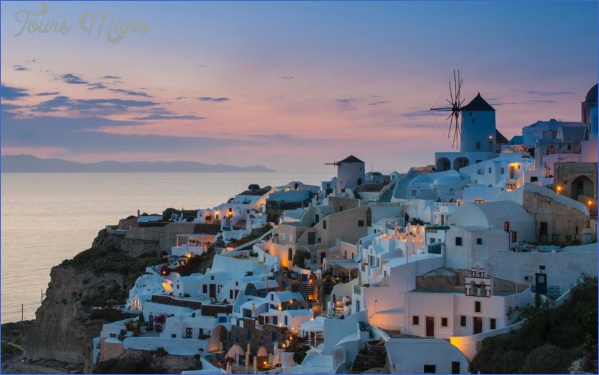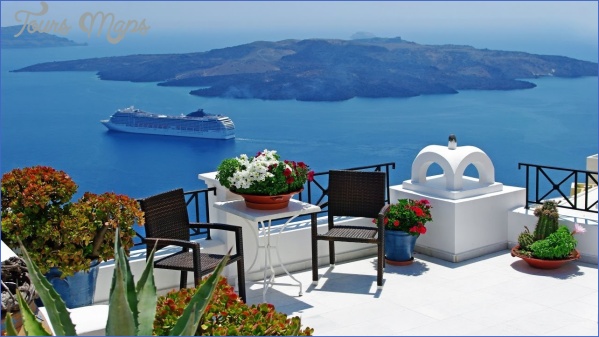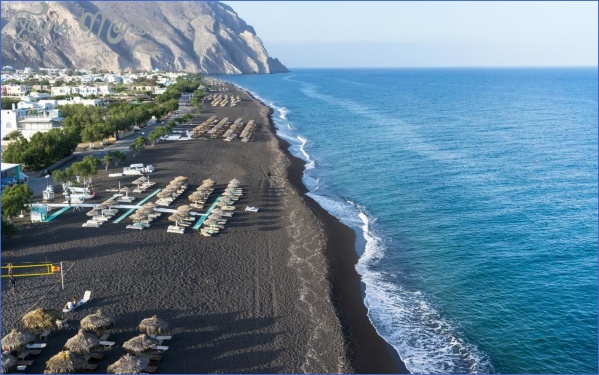THE ATLANTIS QUESTION
Santorini has often been connected with Atlantis, the legendary continent that sank to the bottom of the sea while it was at its zenith. The mystery surrounding the destruction of the one and the disappearance of the other has preoccupied scientists for generations.
The starting-points for the debate about Atlantis are the references to be found in Plato’s dialogues Timaeus (21E-25D) and Critias (108E-121C). According to the account given in Timaeus, when the Athenian law-giver Solon visited Egypt (c. 590 BC), he was told the story of Atlantis by a priest at Sais: the place had been “a great and wonderful state which ruled over the other islands” and owed its power to the civilisation that had evolved there.
The isleI ofNea Kameni emerged in the middle of the caldera of Santorini in 757.1 On it, one can mil the crater of the volcano.
Santorini Guide for Tourist Photo Gallery
The kingdom consisted of two islands, the “larger” and the “smaller”, and there were ten cities. Of these, only two are mentioned more specifically: the “metropolis” and the “royal city”. The people of Atlantis had launched an attack on Athens 900 years before the time Solon had his talk with the priest, and by that time they were already masters of many other lands, from Libya to Egypt and Europe. But the Athenians defeated them, and liberated all the lands that Atlantis had conquered. Later, Atlantis suffered a terrible earthquake and a flood, sinking in its entirety beneath the waves and making the sea around it shallow, muddy and impossible to sail across. In Critias we find even more information about Atlantis: it had been founded by Poseidon, we are told, and Plato describes its monarchs, its administration, its social classes, the occupations and customs of its inhabitants, the climate, the terrain, the architecture and the facilities provided by its harbour. The narrative continues with the decline of the island’s culture and the decision taken by the gods to destroy it, but breaks off suddenly at the point where Zeus has summoned the gods and is about to address them.
The finds from the excavations at Akrotiri, which indicate the presence of a high level of civilisation, its violent cessation, and the fact that both catastrophes took place at about the same time, have led many scholars to conclude that the lost Atlantis was none other than Santorini. However, Professor Mar-inatos gave a different interpretation of the myth. According to him, Atlantis should really be identified with Minoan Crete, since the disasters that befell Crete after the eruption were fatal to its further development. Furthermore, the topography and shape of Atlantis, as described by the ancients, greatly resemble those of the plateau of Messara in Crete. Perhaps Crete was the “larger” island, the “royal city”, while Santorini, with which Crete had ties, would have been the “Metropolis’’ or “smaller” island. Over the centuries, as the myth was told and retold, it is very likely that the events underwent subtle changes. Thus the destruction of a civilisation, the Minoan, was attributed to the sinking of the island – but the island that blew up and subsequently sank was a large part of Santorini, not Crete. Nevertheless, the question still remains: was there such a place as Atlantis? Or did Plato, perhaps wishing to instmct his compatriots on the consequences that can arise when mortals are lacking in respect for the gods, himself fabricate the myth of the lost continent, drawing on memories of the facts about the real destruction of Santorini?
Maybe You Like Them Too
- Top 10 Islands You Can Buy
- Top 10 Underrated Asian Cities 2023
- Top 10 Reasons Upsizing Will Be a Huge Travel Trend
- Top 10 Scuba Diving Destinations
- World’s 10 Best Places To Visit





